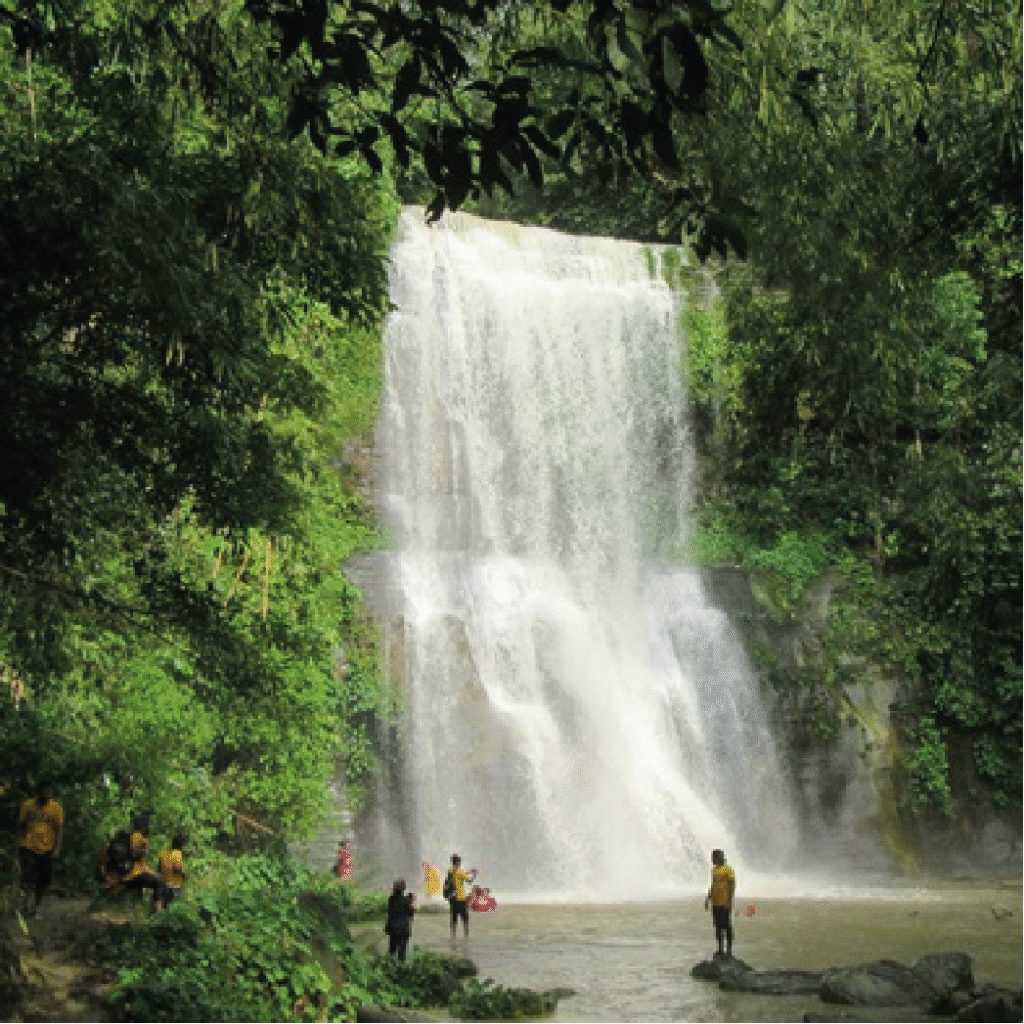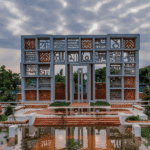Imagine being in a location where there are lots of vibrant green trees or perhaps imagine hearing a waterfall- rolling and gushing. Try a place where hills meet wetlands or maybe a water-logged forest. What is not found in Sylhet? This division in northeastern Bangladesh has it all. There is more to it than the clichéd tea-gardens. Today, we are going to find what a visit to Sylhet has in store!
Tanguar Haor, a vast freshwater swamp and one of Bangladesh’s most important wetland ecosystems, is located in the Dharmapasha and Tahirpur upazila of Sunamganj District. The Meghalayan hills near Tanguar is a treat to the eye of a nature lover. One can enjoy the water, hills, and breathe in an unlimited amount of oxygen. Tanguar gets its water from about 30 smaller springs which flow from Meghalaya. A watchtower overlooks the place allowing for a 360° spectacle of the landscape. The best time for a trip would be during the rainy season when the water level is high.
Not very far from the Tanguar is the Niladri Lake. It is famous for its clear blue-green water, lovely sky, and green hills. The spot is known among locals as “the Kashmir of Bengal”. Located at the foot of the India-Bangladesh border in Sunamganj, Niladri Lake offers a stunning view of the Meghalayan hills. Many other attractions such as Jadukata River, Barikka Tila, Shimul Bagan, and Lakma Chhara conveniently fall on the same route.
Shimul Bagan or Garden of Bombax/Red Silk Cotton flower is worthwhile for more than one reason. The Joynal Abedin Shimul Bagan in Sunamanj covers roughly 100 acres of land. About 10,000 vibrant red coloured Shimul trees span across the area in neat columns. The location has appealed to many tourists and photo-lovers from all over the country. Here people also get to see beautiful birds especially the Finches. The garden belonged to Joynal Abedin a nature lover in 1960. March and April are the best time to visit the place when the flowers in the garden bloom.
Jaintapur is a charming paradise in Sylhet. You can see the cloud-covered Indian Himalayas from here. Therefore, Jaintapur is called the “Cloud Kingdom of Sylhet”. There are many natural resources in this town, such as massive green hill, blue river water, and gas field. During the British period, Jainta was one of the favorites because of its natural resources. Tea gardens surround Jaintapur which is about 5 kilometers from Jaflong (another area of outstanding natural beauty).
The Jainta Rajbari, located near Jainta Bazar, was the residence of the kings of Jainta. Even though the palace is in poor condition today, yet many tourists come to learn about the history of these rulers. The buildings of that kingdom are still spread out in different places. Another architectural site of Jainta is the Jainteshwari Bari. The huge house surrounded by high walls of the ancient period is still standing as a witness of that time. People visiting Jaflong, Lalakhal, and Sreepur often stop by this historic house. It is a preserved antiquity under the Directorate of Archaeology.
Dibir Haor, also known as Shaplar Beel, is a lovely lake surrounded by waterfalls on the foothill of the Meghalaya in Jaintapur Sylhet. Shapla or Red Water Lilies bloom in the lake for four months starting from November to January. The flowers are a glory in the morning.
Craving for a trek? Kala Pahar is Sylhet’s highest point. It is 1098 feet tall and is also the highest point in northern Bangladesh. It is known as Hararganj Pahar by the Bangladesh Geographical Society. It is a beautiful hill located in Kulaura upazila of Moulvibazar district. When the sky is clear in autumn, you can see the blue water of Hakaluki haor from the top of Kala Pahar.
Hakaluki is one of the largest freshwater wetlands in Asia and it is spread between the Moulvibazar and Sylhet districts. The word ‘Hakaluki’ means hidden wealth. There are about 238 beels (perennial water body) in this haor. About 200 species of guest birds come to this haor every winter. The best time to visit Hakaluki is from November to February. And during the rainy season, one could mistake the haor for a sea.
Chan Mia’s Pineapple Garden is situated in Dattarail village in Golapganj upazila of Sylhet. The garden was established by Chan Miah, a local farmer passionate about pineapple cultivation, in the early 1990. There has been a cultivation of Honeyquin pineapples on the hills for a long time.
Although not very popular, Lovachora, situated at the foot of Khasia-Jainta hills in Kanaighat upazila, is incredibly beautiful. The real splendour of Lovachora is in the river route. A tea garden is located on the banks of this river. One of the most interesting structures of this tea garden is the suspension bridge built in 1925 by the British for traveling to Lovachora. The border of India starts from the end of the garden. Like most places in Sylhet, monsoon is the best time for planning a trip to this place.
Kulumchara is a village bordering Sonar Hat in Goainghat Upazila of Sylhet. The Jharna (waterfall) on the border of India is known as Kulumchara Jharna. You can go there by boat from Hadarpar, Goainghat, Sylhet. After going there, you will discover yourself in open nature. One can witness the destination closely. It seems as though one has reached the foot of the mountain. The surroundings is heavenly. The sound of the shower is incredible. The rainwater pours into the fall during monsoon. People rush from near and far to see it. When you leave the boat and walk along the jungle path, you will see the sound of the shower getting louder. Here you will find various species of plants, orchids, and herbs. It is best to go early in the morning to see the Kulumchara waterfall. However, it is advised to return before evening.

Ham Ham or Hamham Jharna is a natural waterfall located in the Kurma forest deep in the Rajkandi Reserve Forest of Kamalganj Upazila in Moulvibazar District, Bangladesh. The waterfall was discovered in late 2010 by a group of tourists trekking through the remote jungle with a tourist guide Shyamal Devavarma. This waterfall is in an inaccessible deep. The forest is alternately 147 or 170 feet high. Whereas Madhavakunda falls, which is officially recognized as the highest waterfall in Bangladesh, has a height of 162 feet [as of 12 October 1999]. But there is no established or verified opinion about the height of the falls. All are tourist guesses. The researchers opined that its extent is about three times larger than that of Madhavakunda.

Anyone will be overwhelmed by the incredible beauty of the Panthumai Jharna. It is located in India, however its magnificence can be witnessed from Bangladesh. Panthumai flows down the mountain slope through the huge rocks and enters the domains of Bangladesh. Locals also call this river ‘Chora’. As the Pantumai waterfall is separated from the country, so it is called Phata Chora Jharna. The Jharna borders the two countries with a row of plum trees on the right side and a wire fence on the left side.











